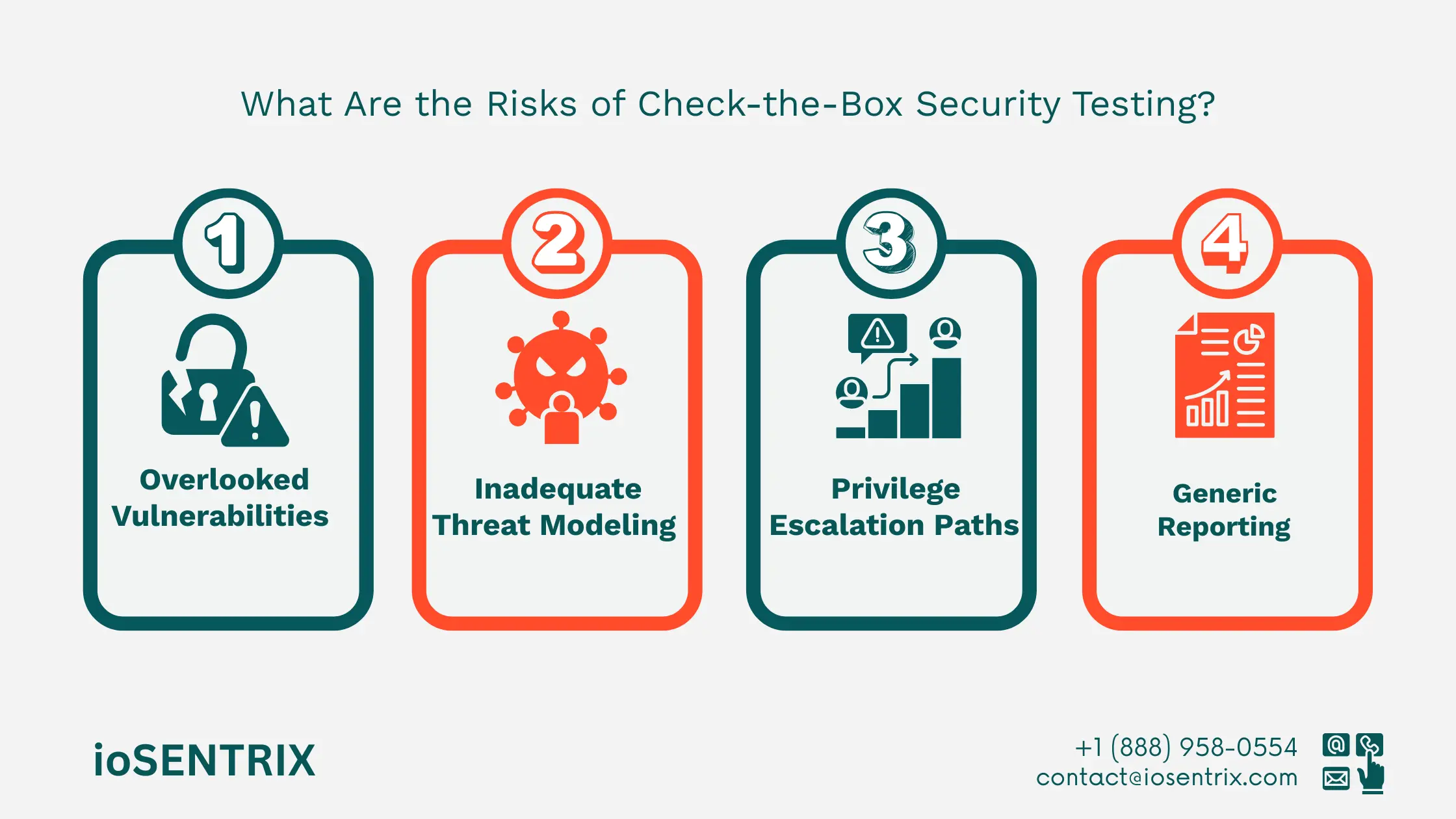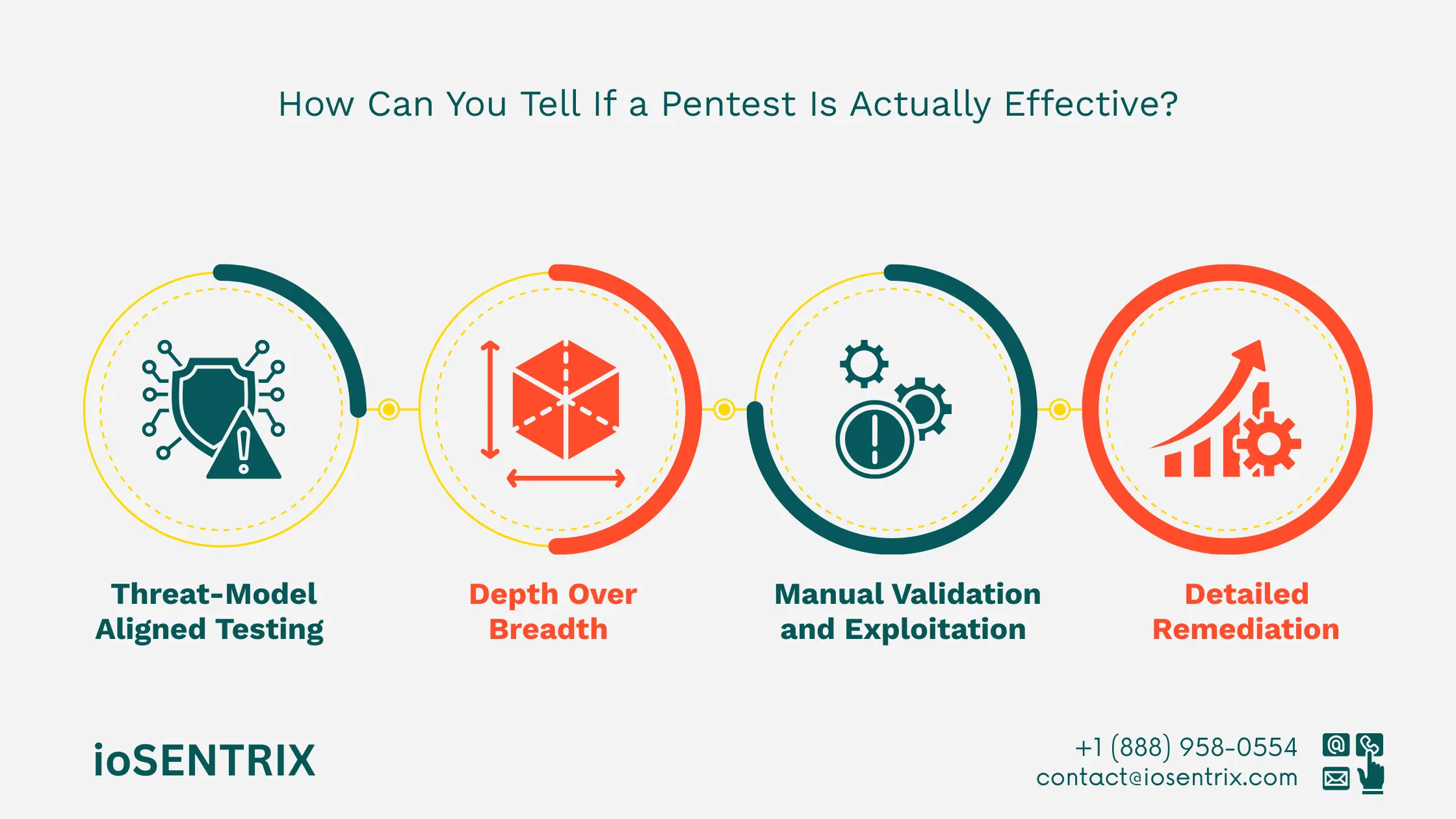
Many organizations today rely on compliance focused penetration testing primarily to satisfy industry mandates like PCI DSS, HIPAA, or GDPR.
These box penetration testing efforts are often viewed as simple checklist exercises meant to pass an audit rather than a real effort to identify and address security risks.
Because these tests are quicker to perform, lower in cost, and easier to schedule, businesses may prioritize them over more thorough security assessments.
However, while regulatory checklist pentests might be enough to show an auditor that the basics are covered, they rarely offer the depth needed to defend against modern cyber threats.
Organizations need to recognize that meeting regulatory requirements is not the same as being secure. Investing in threat model based pentesting is essential for identifying critical vulnerabilities and preparing for real-world attacks.
A box pentest, or box penetration testing, refers to a type of security test designed to meet compliance needs rather than to uncover serious flaws.
These tests often follow a predefined list of tasks without tailoring the engagement to the organization's unique infrastructure or threat landscape.
Although a regulatory checklist pentest may be required by governing bodies, it rarely goes deep enough to reveal hidden vulnerabilities.
In most cases, these assessments check if common vulnerabilities exist but fail to consider the business logic, internal processes, or complex attack paths that real attackers might exploit.
For organizations that take security seriously, the better approach is a threat model based penetration test, which is customized to reflect realistic attack scenarios specific to their environment.
A major danger of compliance focused penetration testing is that it can give organizations a false sense of protection.
This happens because these assessments prioritize passing an audit rather than simulating actual cyberattacks.
Some key issues include:
Relying solely on box penetration testing can lead decision-makers to believe their systems are secure when, in reality, major threats remain unchecked.
Choosing compliance focused penetration testing as your main defense mechanism opens the door to multiple security risks:
Basic checklist assessments often miss high-impact flaws. These gaps can be exploited by attackers, resulting in data loss, service disruption, or reputational damage.
Most regulatory checklist pentests fail to include real threat modeling. Without understanding the motivation, tools, and tactics of threat actors, defenses will likely fall short.

Complex paths that allow attackers to escalate privileges or exploit business logic are rarely tested. These often go unnoticed until a breach occurs.
Most box pentests deliver generic reports. Without detailed remediation steps, your security team is left guessing how to fix the problems.
Compliance is a great starting point but not the end goal. Compliance focused penetration testing ensures your organization meets minimum security requirements.
However, these standards are often static, broad, and not reflective of the rapidly evolving threat landscape.
Real security requires:
While compliance might help you avoid penalties, only threat model based pentesting can help you stay ahead of cybercriminals.
Threat actors are highly skilled at finding and exploiting the blind spots created by checkbox-style testing.
When organizations rely only on regulatory checklist pentests, they often miss the very issues attackers are looking for.
Commonly exploited gaps include:
Attackers use these weak points to infiltrate networks, steal data, and escalate privileges. The worst part? These breaches often go unnoticed until damage has already occurred.
Effective penetration testing goes well beyond checklist compliance. Here's what sets it apart:
Threat model based pentesting begins with a deep understanding of the threats your business faces. The process is tailored based on attacker techniques relevant to your industry, technologies, and data flows.
A quality test does not stop at identifying common CVEs. It uncovers how systems interact, where misconfigurations lie, and whether hidden logic flaws can be abused.

Automated tools help detect basic issues, but real impact is measured through manual testing. This includes lateral movement, privilege escalation, and sensitive data exposure, executed in a safe and controlled environment.
The best penetration testing reports offer detailed steps for mitigation. This includes both technical and strategic recommendations, ensuring your team can take quick and effective action.
At ioSENTRIX, we do not stop at compliance focused penetration testing. Our approach is rooted in threat model based pentesting that is aligned with the realities of today’s threat landscape.
Here is how we do it differently:
Our mission is not just to help you pass an audit, but to uncover real threats and build long-term resilience.
Box penetration testing focuses on passing audits using checklist items. Real pentesting, especially when threat model based, aims to identify actual vulnerabilities and simulate real-world attacks.
In many industries, yes. Frameworks like PCI DSS or HIPAA often mandate penetration testing. However, meeting these standards does not necessarily mean your systems are secure.
At a minimum, annually. However, any time you make significant changes to your infrastructure, applications, or business model, a new test is recommended.
Automated tools can detect basic issues but miss complex vulnerabilities like logic flaws or privilege escalation paths. Manual validation is essential for an effective pentest.
It is tailored to your environment, focuses on how real attackers behave, and uncovers vulnerabilities specific to your business processes and technology stack.
Lorem ipsum dolor sit amet, consectetur adipiscing elit, sed do eiusmod tempor incididunt ut labore et dolore magna aliqua. Ut enim ad minim veniam, quis nostrud exercitation ullamco laboris nisi ut aliquip ex ea commodo consequat. Duis aute irure dolor in reprehenderit in voluptate velit esse cillum dolore eu fugiat nulla pariatur.
Block quote
Ordered list
Unordered list
Bold text
Emphasis
Superscript
Subscript